
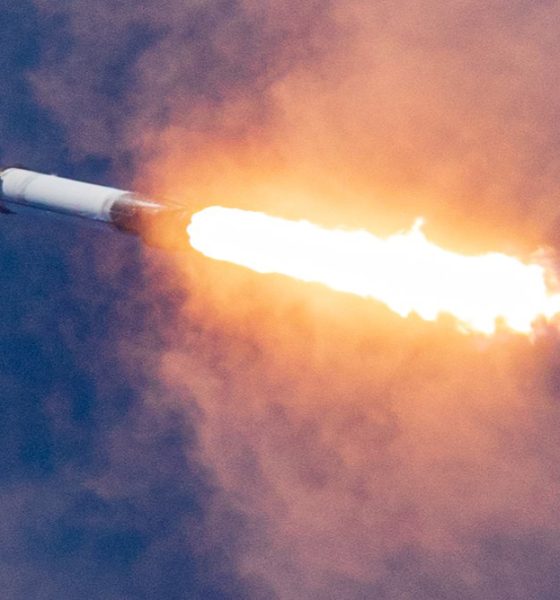
News
SpaceX’s 99th Falcon launch checks off new rocket booster reuse record [updated]
Update: Right on schedule, SpaceX Falcon 9 booster B1049 lifted off from Cape Canaveral Air Force Station Launch Complex 40 (LC-40) carrying 58 Starlink satellites and three rideshare payloads from Earth observation company Planet.
A bit less than nine minutes after liftoff, B1049 performed a bullseye landing on drone ship Of Course I Still Love You (OCISLY), becoming the first Falcon 9 booster to successfully launch and land six times. Soon after, the expendable Falcon 9 upper stage reached orbit without issue and deployed three Planet SkySats to complete SpaceX’s third Starlink rideshare mission in two months.
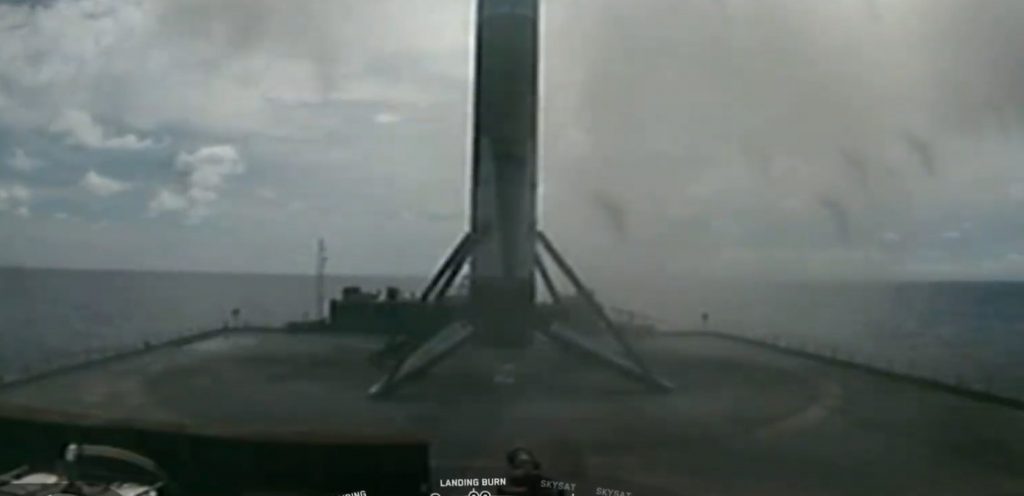
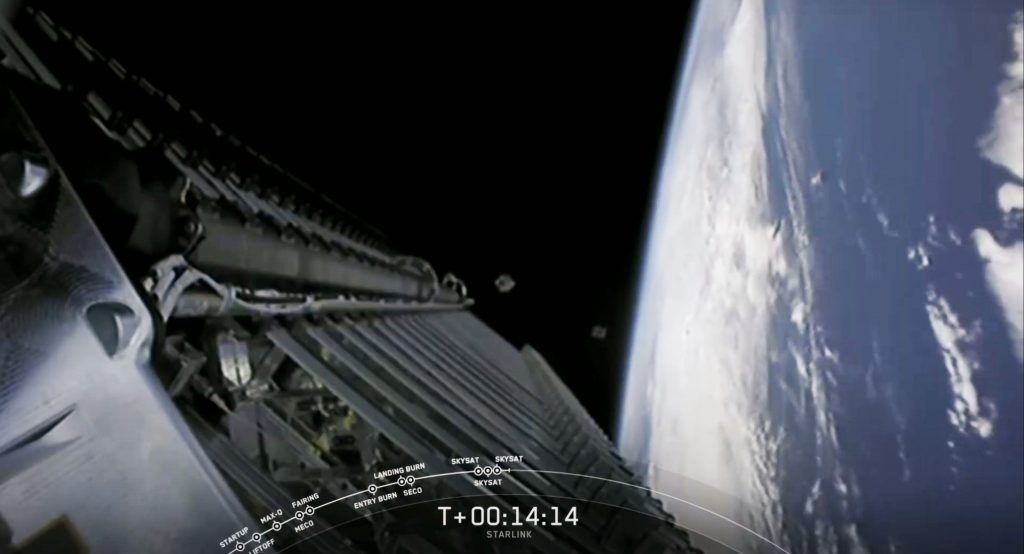
Around T+45 minutes, SpaceX revealed that recovery ship GO Ms. Tree (formerly Mr. Steven) had successfully caught a Falcon fairing half for the fifth time – also the second catch of a twice-flown fairing. Seconds later, Falcon 9 deployed all 58 Starlink v1.0 satellites, completing SpaceX’s 11th Starlink mission and leaving almost 600 operational v1.0 satellites in orbit. With this success, SpaceX is now just four launches away from beginning a public Starlink internet beta test.
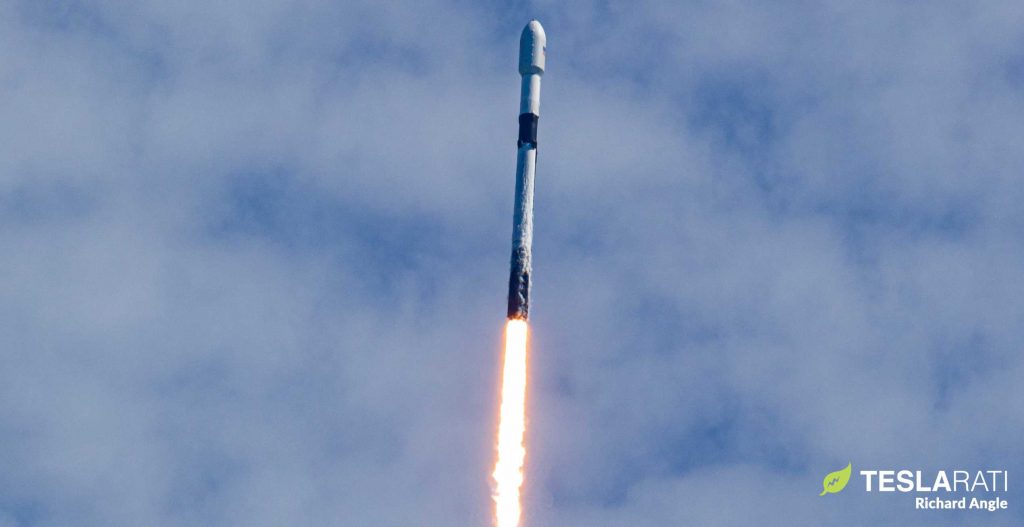
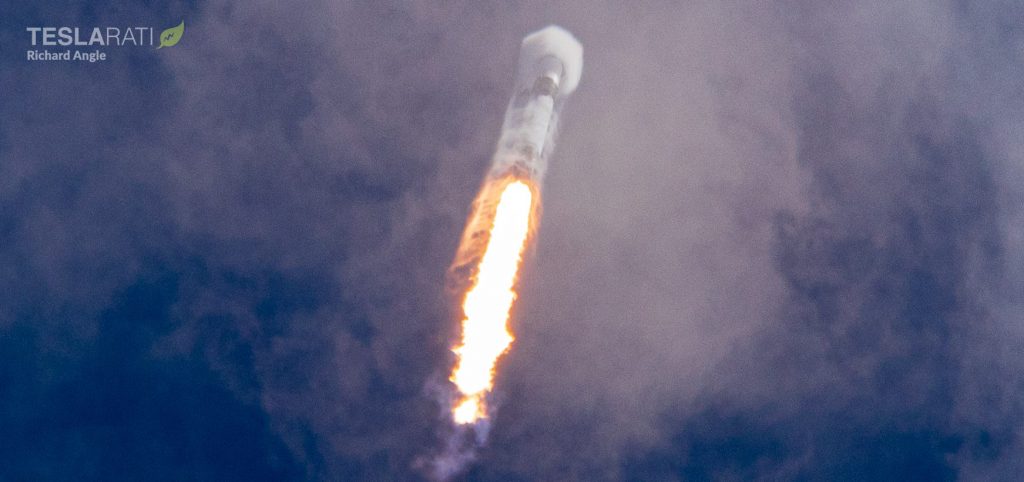
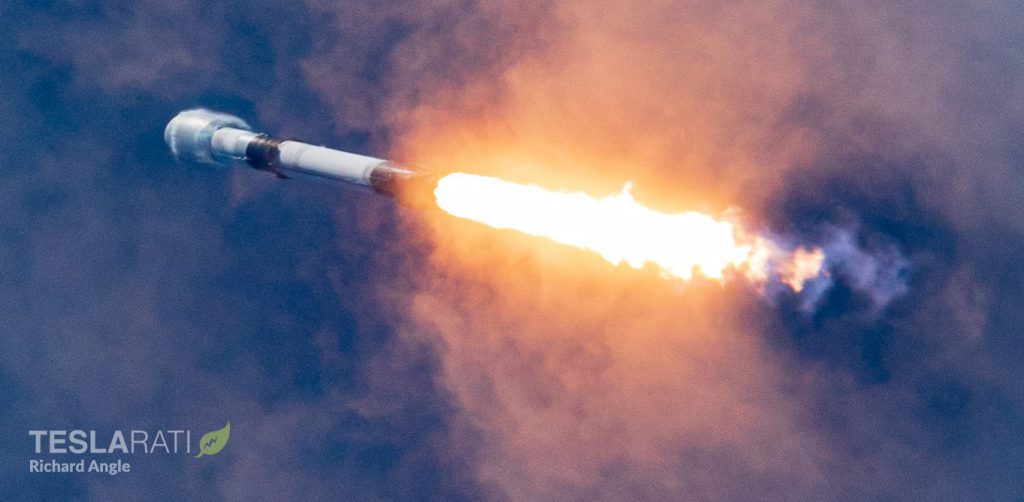
SpaceX is hours away from crossing off a major rocket reusability milestone while simultaneously attempting the 99th 100th launch of a Falcon rocket.
SpaceX’s 10th Starlink v1.0 satellite launch, 11th Starlink mission overall, and ninth Starlink launch this year is scheduled to lift off from Cape Canaveral, Florida no earlier than (NET) 10:31 am EDT (14:31 UTC) on Monday, August 18th. Carrying 58 Starlink spacecraft and three Planet SkySat Earth imaging satellites, Starlink-10 will be third mission of SpaceX’s Smallsat Rideshare Program. If the mission goes according to plan, SpaceX will end the day with some 585 operational Starlink satellites in orbit – ~69% of the way to the internet constellation’s initial operational capability (IOC).
If successful, Starlink-10 would leave SpaceX just four launches shy of one of the biggest milestones facing any satellite communications constellation.
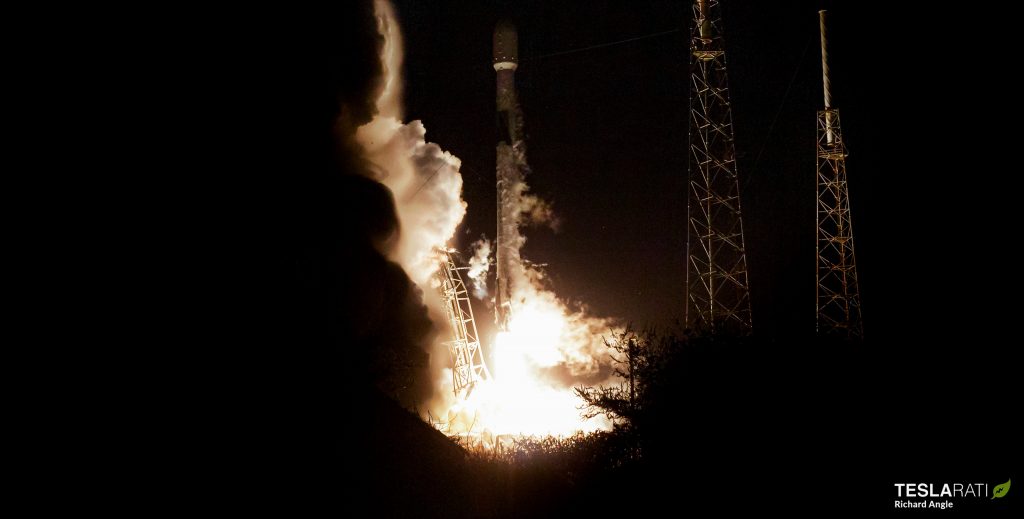
100th launch while simultaneously launching the same Falcon 9 booster for the sixth time – a reusability first. (Richard Angle)
For Starlink, there are likely several different initial operational capability (IOC) milestones ahead of the constellation. As of July 2020, SpaceX says “hundreds” of private beta test participants – mostly SpaceX employees and their families – are already putting the nascent internet service through its paces.
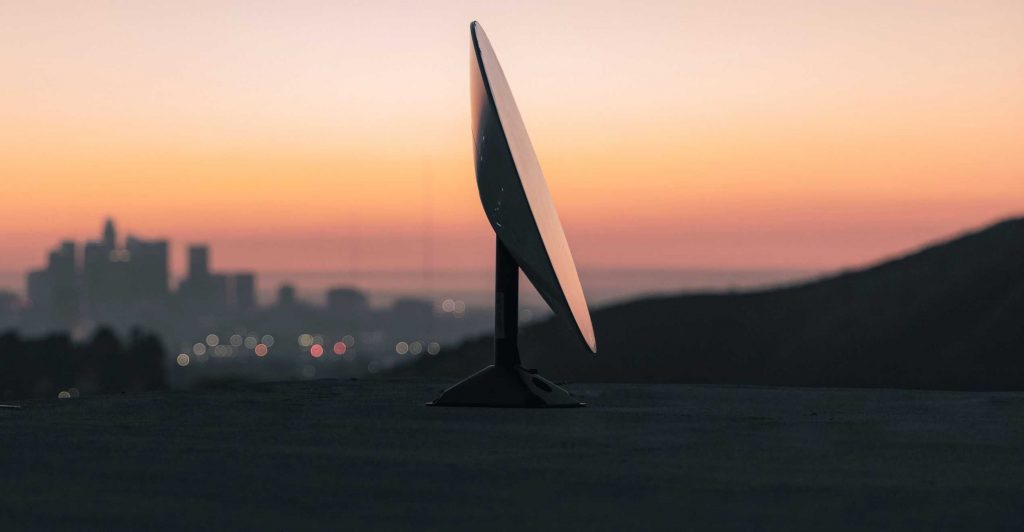
More recently, the first public signs of those beta testers appeared via speed tests shared (intentionally or not) online, revealing Starlink internet speeds ranging from 10-60+ megabits per second (Mbps) and latency (ping) approaching what CEO Elon Musk said early customers should expect (20-30 ms). Already, latency alone puts Starlink internet service leagues above medium Earth orbit (MEO) and geostationary (GEO) competitors, while the speeds available to private beta testers are easily comparable to or better than existing satellite internet alternatives. Given that current beta-testers are only accessing a constellation of a few hundred satellites (of thousands planned) with user terminal prototypes, it’s safe to say that the quality of Starlink internet service can only improve.
While SpaceX is barely a tenth of the way to Starlink’s first ~4400-satellite phase, a May 2020 interview with Gwynne Shotwell revealed that the company intends to open the Starlink beta program to the public once 14 batches of satellites are safely in orbit. Based on recent FCC-SpaceX interactions, it appears that the company is excluding v0.9 satellite prototypes from the operational count, implying that said public beta can begin to roll out once the Starlink V1 L14 (Starlink-14) launch is complete and the satellite batch has boosted into its final orbit.
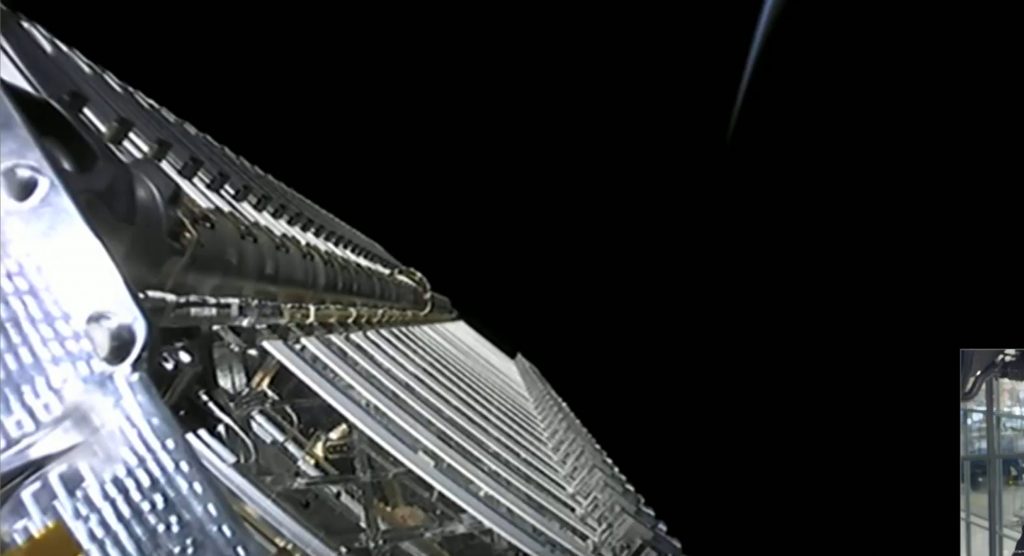
Main purpose aside, the Starlink-10 mission will also mark several major rocket milestones for SpaceX. Regardless of the outcome, the company will be just one launch shy from cresting the triple-digit
mark, reaching 100 Falcon 1, Falcon 9, and Falcon Heavy launch attempts since its 2005 launch debut. The mission will also be Falcon 9’s 92nd launch and – if successful – 91st success. Based on SpaceX’s activity in the last eight months, the company could feasibly complete another 7-9 launches, of which 4-5 would likely be Starlink missions.
To economically launch so many Starlink missions, SpaceX has dug deep into the reusability of its Falcon 9 rockets. In April, Falcon 9 B1048 became the first booster to launch five times, although an engine failure prevented a landing attempt. In June and August, another two Falcon 9 boosters successfully launched and landed for the fifth time. Now, Falcon 9 B1049 – the first SpaceX rocket to successfully launch and land five times – is set to become the first to launch (and hopefully land) six times with Starlink-10. If the schedule holds and Starlink-10 goes according to plan, SpaceX will have set two consecutive booster reuse records less than three months (75 days) apart.
Tune in at the link below to watch SpaceX’s Starlink-10 launch and landing live.
Check out Teslarati’s Marketplace! We offer Tesla accessories, including for the Tesla Cybertruck and Tesla Model 3.

News
Tesla aims to combat common Full Self-Driving problem with new patent
Tesla writes in the patent that its autonomous and semi-autonomous vehicles are heavily reliant on camera systems to navigate and interact with their environment.

Tesla is aiming to combat a common Full Self-Driving problem with a new patent.
One issue with Tesla’s vision-based approach is that sunlight glare can become a troublesome element of everyday travel. Full Self-Driving is certainly an amazing technology, but there are still things Tesla is aiming to figure out with its development.
Unfortunately, it is extremely difficult to get around this issue, and even humans need ways to combat it when they’re driving, as we commonly use sunglasses or sun visors to give us better visibility.
Cameras obviously do not have these ways to fight sunglare, but a new patent Tesla recently had published aims to fight this through a “glare shield.”
Tesla writes in the patent that its autonomous and semi-autonomous vehicles are heavily reliant on camera systems to navigate and interact with their environment.

The ability to see surroundings is crucial for accurate performance, and glare is one element of interference that has yet to be confronted.
Tesla described the patent, which will utilize “a textured surface composed of an array of micro-cones, or cone-shaped formations, which serve to scatter incident light in various directions, thereby reducing glare and improving camera vision.”

The patent was first spotted by Not a Tesla App.
The design of the micro-cones is the first element of the puzzle to fight the excess glare. The patent says they are “optimized in size, angle, and orientation to minimize Total Hemispherical Reflectance (THR) and reflection penalty, enhancing the camera’s ability to accurately interpret visual data.”
Additionally, there is an electromechanical system for dynamic orientation adjustment, which will allow the micro-cones to move based on the angle of external light sources.
This is not the only thing Tesla is mulling to resolve issues with sunlight glare, as it has also worked on two other ways to combat the problem. One thing the company has discussed is a direct photon count.
CEO Elon Musk said during the Q2 Earnings Call:
“We use an approach which is direct photon count. When you see a processed image, so the image that goes from the sort of photon counter — the silicon photon counter — that then goes through a digital signal processor or image signal processor, that’s normally what happens. And then the image that you see looks all washed out, because if you point the camera at the sun, the post-processing of the photon counting washes things out.”
Future Hardware iterations, like Hardware 5 and Hardware 6, could also integrate better solutions for the sunglare issue, such as neutral density filters or heated lenses, aiming to solve glare more effectively.
Elon Musk
Delaware Supreme Court reinstates Elon Musk’s 2018 Tesla CEO pay package
The unanimous decision criticized the prior total rescission as “improper and inequitable,” arguing that it left Musk uncompensated for six years of transformative leadership at Tesla.

The Delaware Supreme Court has overturned a lower court ruling, reinstating Elon Musk’s 2018 compensation package originally valued at $56 billion but now worth approximately $139 billion due to Tesla’s soaring stock price.
The unanimous decision criticized the prior total rescission as “improper and inequitable,” arguing that it left Musk uncompensated for six years of transformative leadership at Tesla. Musk quickly celebrated the outcome on X, stating that he felt “vindicated.” He also shared his gratitude to TSLA shareholders.
Delaware Supreme Court makes a decision
In a 49-page ruling Friday, the Delaware Supreme Court reversed Chancellor Kathaleen McCormick’s 2024 decision that voided the 2018 package over alleged board conflicts and inadequate shareholder disclosures. The high court acknowledged varying views on liability but agreed rescission was excessive, stating it “leaves Musk uncompensated for his time and efforts over a period of six years.”
The 2018 plan granted Musk options on about 304 million shares upon hitting aggressive milestones, all of which were achieved ahead of time. Shareholders overwhelmingly approved it initially in 2018 and ratified it once again in 2024 after the Delaware lower court struck it down. The case against Musk’s 2018 pay package was filed by plaintiff Richard Tornetta, who held just nine shares when the compensation plan was approved.
A hard-fought victory
As noted in a Reuters report, Tesla’s win avoids a potential $26 billion earnings hit from replacing the award at current prices. Tesla, now Texas-incorporated, had hedged with interim plans, including a November 2025 shareholder-approved package potentially worth $878 billion tied to Robotaxi and Optimus goals and other extremely aggressive operational milestones.
The saga surrounding Elon Musk’s 2018 pay package ultimately damaged Delaware’s corporate appeal, prompting a number of high-profile firms, such as Dropbox, Roblox, Trade Desk, and Coinbase, to follow Tesla’s exodus out of the state. What added more fuel to the issue was the fact that Tornetta’s legal team, following the lower court’s 2024 decision, demanded a fee request of more than $5.1 billion worth of TSLA stock, which was equal to an hourly rate of over $200,000.
Delaware Supreme Court Elon Musk 2018 Pay Package by Simon Alvarez
News
Tesla Cybercab tests are going on overdrive with production-ready units
Tesla is ramping its real-world tests of the Cybercab, with multiple sightings of the vehicle being reported across social media this week.

Tesla is ramping its real-world tests of the Cybercab, with multiple sightings of the autonomous two-seater being reported across social media this week. Based on videos of the vehicle that have been shared online, it appears that Cybercab tests are underway across multiple states.
Recent Cybercab sightings
Reports of Cybercab tests have ramped this week, with a vehicle that looked like a production-ready prototype being spotted at Apple’s Visitor Center in California. The vehicle in this sighting was interesting as it was equipped with a steering wheel. The vehicle also featured some changes to the design of its brake lights.
The Cybercab was also filmed testing at the Fremont factory’s test track, which also seemed to involve a vehicle that looked production-ready. This also seemed to be the case for a Cybercab that was spotted in Austin, Texas, which happened to be undergoing real-world tests. Overall, these sightings suggest that Cybercab testing is fully underway, and the vehicle is really moving towards production.
Production design all but finalized?
Recently, a near-production-ready Cybercab was showcased at Tesla’s Santana Row showroom in San Jose. The vehicle was equipped with frameless windows, dual windshield wipers, powered butterfly door struts, an extended front splitter, an updated lightbar, new wheel covers, and a license plate bracket. Interior updates include redesigned dash/door panels, refined seats with center cupholders, updated carpet, and what appeared to be improved legroom.
There seems to be a pretty good chance that the Cybercab’s design has been all but finalized, at least considering Elon Musk’s comments at the 2025 Annual Shareholder Meeting. During the event, Musk confirmed that the vehicle will enter production around April 2026, and its production targets will be quite ambitious.








